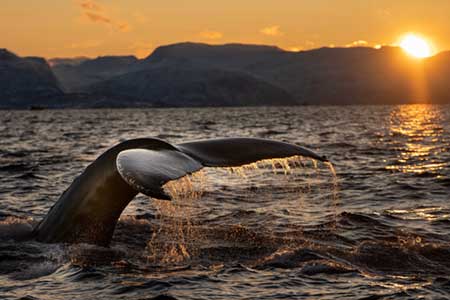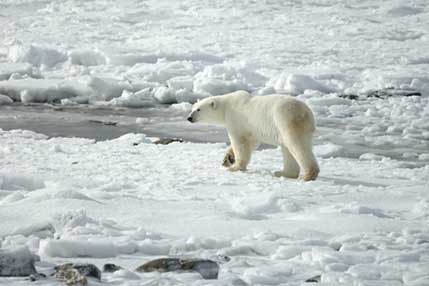Stephen Kasprzak looks at the recent UN Report on Climate Change and What is Missing From the Conversation
 The UN’s August 2021 Report on Climate Change noted the world’s average annual temperature has risen 2 degrees Fahrenheit over the past 100 years.
The UN’s August 2021 Report on Climate Change noted the world’s average annual temperature has risen 2 degrees Fahrenheit over the past 100 years.
The Siberian Arctic Kara Sea’s average annual surface air temperature has increased 9 degrees Fahrenheit from 1998 to 2018 according to Roshydromet (Russia’s Federal Service for Hydrometeorology and Environmental Monitoring). This 9-degree rise is 4 1⁄2 times greater than global 2-degree rise, occuring over a 20-year period, not 100 years. (The Kara Sea’s surface area is 358,000 square miles. New England by contrast, is 186,458 square miles.)
NASA recently reported that the Earth’s energy imbalance has almost doubled between mid- 2005 to mid-2019 and warned the Arctic region is warming faster than the rest of the planet.
Northern mega dams are configured to capture and hoard the natural spring freshet (the spring thaw of snow and river ice melt). This long-term storage allows spring and summer solar energy to be absorbed by their colossal reservoirs, creating huge heated thermal masses for winter discharge into rivers. These enormous reservoir dams with their regulated warm water and winter discharges, are the driving force decreasing spring and summer coastal sea ice extent, often shrouding river valleys in fog (water vapor) for hundreds of miles throughout the winter months.
“Since the year 2000, the rate at which the Arctic absorbs solar radiation in June, July and August has increased by 5 percent, said Norman Loeb, principal investigator for CERES and a climate scientist at NASA’s Langley Research Center. While a 5 percent increase might not seem like much, consider that the global rate has remained essentially flat during that same time. No other region on Earth shows a trend of change.” - Arctic is Absorbing More Sunlight, Patrick Lynch, NASA Earth Observatory website, December 19, 2014.
According to a June 15, 2021, NASA and NOAA Geophysical Research Letter, Satellite and Ocean Data Reveal Marked Increase in Earth’s Heating Rate by Loeb et. al., there are other mechanisms fueling this increase . . . “decreased reflection of energy back into space by clouds and sea ice and increases in well-mixed greenhouse gases and water vapor.”
 Scientists and politicians historically have never openly discussed two of these heat absorbing mechanisms, that is decreasing snow and sea ice cover and increasing water vapor, directly linked with northern dams, or their “domino effect” on climate change. Typically, with a “domino effect” scenario, an end exists. However, with mega dams, the “domino effect” has no definitive end; rather it contains multiple, energized feedback loops that ensure the “domino effect” is continuous and expanding. Each year the loop is complete, and the earth’s climate becomes much warmer, especially in the northern latitudes. The loop not only magnifies natural warming mechanisms, but also suppresses the cooling mechanisms.
Scientists and politicians historically have never openly discussed two of these heat absorbing mechanisms, that is decreasing snow and sea ice cover and increasing water vapor, directly linked with northern dams, or their “domino effect” on climate change. Typically, with a “domino effect” scenario, an end exists. However, with mega dams, the “domino effect” has no definitive end; rather it contains multiple, energized feedback loops that ensure the “domino effect” is continuous and expanding. Each year the loop is complete, and the earth’s climate becomes much warmer, especially in the northern latitudes. The loop not only magnifies natural warming mechanisms, but also suppresses the cooling mechanisms.
For example, “Southeast Hudson Bay and adjacent James Bay are at the forefront of these changes with more than 1-month shortening of the season of sea ice cover as defined using satellite data.” - Rosemary Eastwood et al., Estuaries and Coasts, 2020.
Additionally, the extent of Arctic sea ice in August decreased by about 800,000 square miles in the year 2010 compared to 1980, and 10 years later it decreased by another 300,000 square miles. (National Snow and Ice Data Centre.)
This decadal rate of decline appears to be accelerating and is fueled by another wave of dominoes, namely regulated winter monthly discharges, which are 1,000 to 2,000 percent above the natural, very low winter river flows.
These decreases in Hudson Bay and Arctic sea ice and their associated snow cover, are driving forces in the Northern Hemisphere, causing it to reflect less energy to space and absorb more solar energy in 2008 as compared to 1979.
“The Northern Hemisphere absorbs about 100 PetsWatts more energy now that in 1979- seven-fold greater than all the energy humans use in a year, says Mark Flanner, the scientist from the University of Michigan who made the maps.” (From “Seasonal Effects of Arctic Snow and Ice”, by Holli Riedeek, NASA Earth Observatory website, May19, 2021.)
The energy imbalance of the sub-Arctic and Arctic regions is increasingly annually, as more of the sun’s energy is being absorbed. There is still time to turn this energy imbalance from positive to negative, by restoring the natural water cycle on these northern rivers and eliminating these gigantic human heat sinks.
The UN’s August 2021 Report fails to document how a worldwide reduction in carbon emissions will mitigate the massive heat absorption and water vapor generation by these human mechanisms in a northern region where snow, sea ice, icebergs, and permafrost are quickly disappearing.

